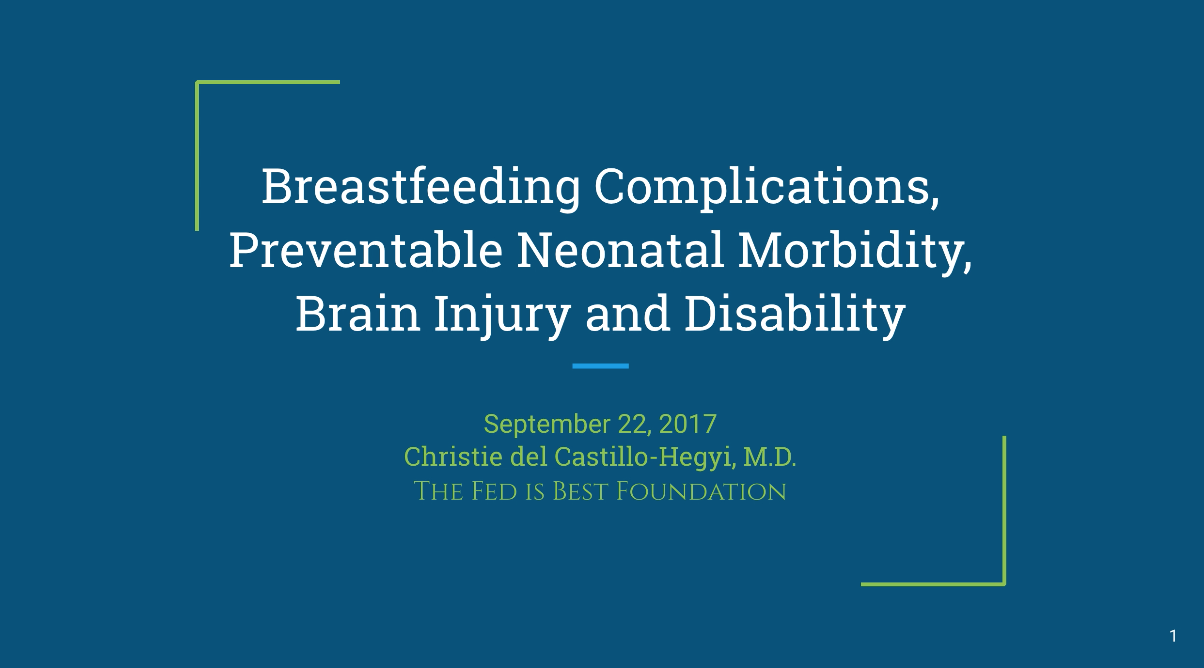
By Jody Segrave-Daly, RN, IBCLC, Co-Founder of the Fed is Best Foundation
During an emergency the sudden disruption of electrical power, clean water, and social relief services can impact the safe acquisition and storage of formula or human milk, as well as the ability to heat water for optimal cleaning practices. Consider the options below to help you prepare for and cope with a disaster:
Preparing Safe Food Items
PUMPED/EXPRESSED BREAST MILK
Pumped breastmilk can be stored in sterile (disposable) bags in a portable cooler with pre-frozen water bottles or ice packs for up to 24 hours. Thawing breastmilk may be refrozen if ice crystals are still evident once power returns. Pump dependent mothers should have 1-2 hand pumps in case all other options fail. External batteries or a vehicle charger/power supply for pumping in the car if its safe is helpful for a short period of time. Use the correct technique to maximize hand expression output.
FORMULA
Consider buying 4-7 days worth of pre-mixed, “ready to feed” bottles of formula, as well as a corresponding amount of clean bottles and nipples. Single use bottles of pre-mixed“nursettes” with disposable nipples or bottles with disposable liners may be especially useful for ease of storage and cleaning.
READY-TO-FEED BABY/TODDLER FOOD
To prepare, buy 4-7 days worth of pre-made baby/toddler meals, disposable utensils, cups, and plates. Opened food may be kept up to 24 hours in a portable cooler.
CLEAN WATER
Having an ample supply of clean water is a top priority in any emergency. A normally active person needs at least two quarts (half a gallon) of water each day. People in hot environments, children, nursing mothers, and ill people will require even more. Store at least one gallon per person, per day. You will also need water for food preparation and hygiene. Consider storing at least a two-week supply of water for each member of your family. If you are unable to store this quantity, store as much as you can.
Preparing Safe Feeding Supplies
HOW TO CLEAN FEEDING SUPPLIES (PUMP, BOTTLE, PACIFIER etc.)
In the absence of power or hot water you can still take steps to make sure your feeding supplies are sufficiently clean:
You will need:
- High quality paper towels
- liquid dish soap
- antiseptic wipes
- disposable gloves
- hand sanitizer
- 1 large plastic bowls for washing
- 1 plastic bowl for rinsing
- 1 large container with lid for storage of clean feeding supplies.
Steps:
- Clean prep surface with antiseptic wipes and wash hands
- Place parts in a clean wash basin (large plastic bowl) used only for washing infant feeding equipment.
- Fill wash basin with CLEAN water and soap.
- Wash and scrub using clean paper towels.
- Rinse using CLEAN water
- Pat dry with clean paper towel / let air dry completely
- Store in clean and closed plastic bin.
REFRIDGERATOR / FREEZER
Consider filling the freezer by stacking one gallon zip-lock bags partially filled with water. This will help keep the freezer cold if power goes out, and will also give you extra water in case of emergency. Freeze individual water bottles to place in portable coolers and to drink when thawed.
BOILING WATER
Boiling is the safest method of treating water to kill microorganisms. In a large pot or kettle, bring water to a rolling boil for 1 full minute. Let the water cool before drinking. The taste of boiled, stored water will improve if you put oxygen back into it by pouring the water back and forth between two clean containers.
CHLORINATING WATER
When no other options are available, you can use household liquid bleach to kill microorganisms. Use only regular household liquid bleach that contains 5.25 to 6.0 percent sodium hypochlorite. Do not use scented bleaches, color safe bleaches, or bleaches with added cleaners. Use bleach from a newly opened or unopened bottle as the potency of bleach diminishes over time. It is not recommended to use chlorinated water for mixing infant formula, however it is still safer than preparing formula with untreated, contaminated water.
Add 16 drops (1/8 teaspoon) of bleach per gallon of water, stir, and let stand for 30 minutes. The water should have a slight bleach odor. If it doesn’t, then repeat the dosage and let stand another 15 minutes. If it still does not smell of bleach, discard it and find another source of water. Other chemicals, such as iodine or water treatment products (sold in camping or surplus stores) that do not contain 5.25 to 6.0 percent sodium hypochlorite as the only active ingredient are not recommended and should not be used.
Additional Resources:
https://www.cdc.gov/breastfeeding/recommendations/handling_breastmilk.htm
https://www.cdc.gov/healthywater/pdf/hygiene/breast-pump-fact-sheet.pdf
https://www.fema.gov/pdf/library/f&web.pdf?fref=gc&dti=217577232092793
https://www.qld.gov.au/emergency/dealing-disasters/formula-emergency
http://www.fearlessformulafeeder.com/2011/11/formula-feeding-in-disaster-situations-is-there-a-dose-of-reality-in-your-emegency-kit/
Click below for a printable version of this article
Infant Feeding Guide in Emergency Situations






